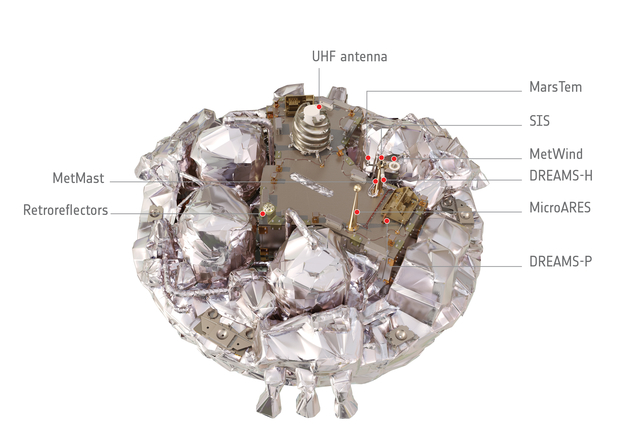Eben angekommen bei ESOC, um der Landung des ExoMars-Landers Schiaparelli entgegenzufiebern.
Die Zeitangaben sind wieder in UTC, das enspricht + 2 Stunden unserer Zeit.
Zwischen 13:04 und 13:14 soll das TGO-Manöver starten: Dann wird die Mars Orbit Insertion (Bahneinschuß) gestartet, der Trace Gas Orbiter gezündet (15:15 UTC) und Schiaparelli aufgeweckt (15:38 UTC).
Oder erweckt? Mmmhhh…eine Frage des Begeisterungslevels.
Dann steigt Schiaparelli in die dünne Marsatmosphäre ab und segelt zunächst an seinem XL-Fallschirm mit 12 Metern Durchmesser hinab zur staubigen Oberfläche des roten Planeten. Nach dem Absprengen des Fallschirms sorgen die Bremsrakten für einen weiterhin nicht zu schnellen Fall bis knapp über der Oberfläche. Und dann plumpst Schiaparelli den letzten Rest Weg seiner langen Reise in den Marssand.
Details zur Landung mit vielen technischen Einzelheiten finden sich auf Michael Khans “Go for launch:ExoMars. TGO. Emm. Oh. Eye.”
Hier ist noch einmal eine detaillierte Aufführung des Abstiegs und der Schiaparelli-Instrumente.
Schiaparelli landet, wie so einige andere Sonden und Rover, am Ausgang des Grabenbruchsystems Valle Marineris. Diese phantastische interaktive Karte zeigt das Landegebiet und gibt viele zusätzliche Informationen.
Hier ist noch einmal ein Überblick über das Landemodul:
-
Schiaparelli – without heat shield and back cover

Date: 28 October 2015
Satellite: ExoMars 2016
Depicts: Schiaparelli
Copyright: ESA/ATG medialabThis artist’s impression shows the interior of the Schiaparelli entry, descent and landing demonstrator module. Schiaparelli, part of the ExoMars 2016 mission, was launched together with the Trace Gas Orbiter on 14 March 2016 and will arrive at the Red Planet in October.
Schiaparelli carries a small science payload, called DREAMS (Dust Characterisation, Risk Assessment, and Environment Analyser on the Martian Surface), to study the environment.
DREAMS consists of a suite of sensors to measure the local wind speed and direction (MetWind), humidity (DREAMS-H), pressure (DREAMS-P), atmospheric temperature close to the surface (MarsTem), the transparency of the atmosphere (Solar Irradiance Sensor, SIS), and atmospheric electric fields (Atmospheric Radiation and Electricity Sensor; MicroARES) at Mars. The payload will operate on the surface of Mars for 2–8 sols.
In addition, there is an investigation known as AMELIA, for entry and descent science data collection using the spacecraft engineering sensors. A separate instrumentation package, COMARS+, will monitor the heat flux on the back cover of Schiaparelli as it passes through the atmosphere.
A compact array of laser retroreflectors, INRRI, is attached to the zenith-facing surface of Schiaparelli. This can be used as a target for Mars orbiters to laser-locate the module.
A UHF antenna is used for communicating with the Trace Gas Orbiter.
Last Update: 18 October 2016
Mittlerweile ist es 15:09 Uhr und nun wird es allmählich unruhig.
Gleich beginnt das Programm mit den Stadien des Abstiegs, eingebettet in Expertenvorträge.
Das Programm wird im Livestream übertragen:
https://www.esa.int/mars_live.
https://www.esa.int/watch_exomars_live.
Und ich bin auf Twitter unter @meertext (Solange ich keinen Becher Tee in das Tablet kippe und mich nicht zu gemobbt fühle.).
Das ExoMars MediaKit mit umfassendan Informationen als pdf:
https://exploration.esa.int/mars/57558-exomars-2016-media-kit/
Zum Weitergucken:

Kommentare (4)